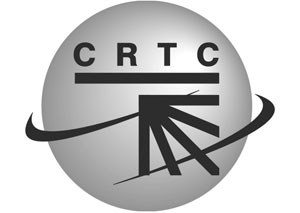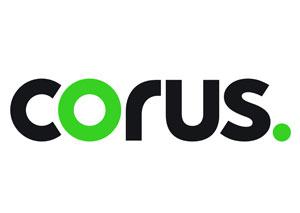
The Broadcasting and Telecommunications Legislative Review Panel has released its What We Heard Report reflecting feedback gathered during its consultations into the modernization of Canada’s communications legislation. It’s also released the submissions the panel received, which are now available online. In response to its Call for Comments, 2,085 letters and written submissions were recorded. Among the report’s takeaways are that there was widespread agreement that there need to be ongoing funding incentives to bridge the urban/rural broadband divide; that sales tax and Canadian content requirements be applied equitably to foreign digital players; that digital platforms should be subject to regulation; and that any regulatory responsibility changes should not be undertaken lightly or without the backing of sound public policy. Find our full coverage here.
 The CRTC has released its latest broadcasting financial summaries that show total broadcasting revenues declined by 1.2% between 2017 and 2018. The biggest drop in revenue was from television distribution services (or BDUs), as they collectively reported a decrease of $168 million (or 2.0%). Conventional TV stations continued to feel the effects of weakening ad sales, consistent with overall negative growth the past seven years. Conventional stations reported revenue of $1.541M last year, compared to $1.608M in 2017, a year-over-year decline of 4.2%. For the fourth consecutive year, television service providers also recorded negative growth, but the commission’s numbers show the rate of decline is showing signs of slowing, going from -2.3% in 2017 to -2.0% in 2018. Overall revenues dropped by $168M, from $8.581M in 2017 to $8.414M in 2018. Cable and satellite service providers continue to report revenue declines, dropping by 3.4% and 5.0% in the last year. IPTV revenues meanwhile, surpassed the $2 billion mark for the first time, however growth is slowing. IPTV revenues grew by 4.5% in 2018, much lower than the five-year average annual growth rate of 12.7%. The sale and rental of set-top boxes generated $937M dollars and accounted for over 11% of total revenues in 2018. Although radio continues to report declining revenues, the rate at which those revenues are shrinking is also slowing down. Commercial stations reported a -0.5% growth rate, lower than the five-year average rate of -1.6%. Over 700 commercial radio stations reported revenues of $1.514M in 2018, compared to $1.521M in 2017. English-language radio stations outperformed all other stations with a reported -0.1% growth rate, followed by French-language stations (-1.7%) and ethnic stations (-3.5%). Local ad revenue dropped 0.9% over the last year, while national ad revenue rose modestly at a rate of 0.7%.
The CRTC has released its latest broadcasting financial summaries that show total broadcasting revenues declined by 1.2% between 2017 and 2018. The biggest drop in revenue was from television distribution services (or BDUs), as they collectively reported a decrease of $168 million (or 2.0%). Conventional TV stations continued to feel the effects of weakening ad sales, consistent with overall negative growth the past seven years. Conventional stations reported revenue of $1.541M last year, compared to $1.608M in 2017, a year-over-year decline of 4.2%. For the fourth consecutive year, television service providers also recorded negative growth, but the commission’s numbers show the rate of decline is showing signs of slowing, going from -2.3% in 2017 to -2.0% in 2018. Overall revenues dropped by $168M, from $8.581M in 2017 to $8.414M in 2018. Cable and satellite service providers continue to report revenue declines, dropping by 3.4% and 5.0% in the last year. IPTV revenues meanwhile, surpassed the $2 billion mark for the first time, however growth is slowing. IPTV revenues grew by 4.5% in 2018, much lower than the five-year average annual growth rate of 12.7%. The sale and rental of set-top boxes generated $937M dollars and accounted for over 11% of total revenues in 2018. Although radio continues to report declining revenues, the rate at which those revenues are shrinking is also slowing down. Commercial stations reported a -0.5% growth rate, lower than the five-year average rate of -1.6%. Over 700 commercial radio stations reported revenues of $1.514M in 2018, compared to $1.521M in 2017. English-language radio stations outperformed all other stations with a reported -0.1% growth rate, followed by French-language stations (-1.7%) and ethnic stations (-3.5%). Local ad revenue dropped 0.9% over the last year, while national ad revenue rose modestly at a rate of 0.7%.
The CRTC has launched its proceeding to review its policy on Indigenous broadcasting. Phase One of the proceeding will see Indigenous broadcasters, content creators and artists within the Indigenous broadcasting creative community participate in engagement sessions across the country. The sessions are aimed at helping identify the needs of Indigenous peoples within the Canadian broadcasting system and determine the specific issues to be addressed in the new policy. Phase Two will include engagement sessions, followed by a public consultation process that will include both Indigenous and non-Indigenous Canadians. Phase Three will see the commission present preliminary conclusions and offer the opportunity to provide further comments on the potential impacts of the proposed policy.
Independent Community Television (ICTV) Montreal is seeking leave to appeal the CRTC’s May decision awarding Rogers’ OMNI Regional the national, multi-ethnic, multi-lingual television broadcast licence. ICTV argues there is reasonable apprehension of bias saying it’s discovered that two of the three members of the panel, Chair Ian Scott and vice-chair, Broadcasting Caroline Simard, communicated independently with representatives of Rogers and Bell on multiple occasions after the issuance of the Notice of Consultation, which initiated the CRTC public proceeding. ICTV says it was not provided with the same opportunity to present its case to the panel, which may have resulted in the CRTC issuing the decision in Rogers’ favour. ICTV has also filed a petition to the Governor-in-Council demanding federal Cabinet overturn the decision and fire Scott and Simard. ICTV maintains the 2016 dismissal of former Ontario regional commissioner Raj Shoan has set a precedent for termination on the grounds of perceived bias.
 Corus Entertainment has released its Q3 financial results. Consolidated revenues increased 4% for the quarter and 3% year-to-date, driven by a 10% increase in Television advertising revenues for the quarter and 8% for the year-to-date Net income attributable to shareholders of $66.4 million ($0.31 per share basic) for the quarter and $133.1 million ($0.63 per share basic) year-to-date. President and CEO Doug Murphy says the double-digit increase in Television advertising was offset by lower subscriber revenues and softness in the Radio segment. Overall segment revenues in Television increased 5% in Q3 and 4% year-to-date. Subscriber revenues were down 4% in Q3 and 2% year-to-date. In Radio, segment revenues decreased 4% in both Q3 and year-to-date. During the quarter, Corus divested its 50.5% interest in the Telelatino Network for $12.5 million.
Corus Entertainment has released its Q3 financial results. Consolidated revenues increased 4% for the quarter and 3% year-to-date, driven by a 10% increase in Television advertising revenues for the quarter and 8% for the year-to-date Net income attributable to shareholders of $66.4 million ($0.31 per share basic) for the quarter and $133.1 million ($0.63 per share basic) year-to-date. President and CEO Doug Murphy says the double-digit increase in Television advertising was offset by lower subscriber revenues and softness in the Radio segment. Overall segment revenues in Television increased 5% in Q3 and 4% year-to-date. Subscriber revenues were down 4% in Q3 and 2% year-to-date. In Radio, segment revenues decreased 4% in both Q3 and year-to-date. During the quarter, Corus divested its 50.5% interest in the Telelatino Network for $12.5 million.
Not A Subscriber? – Subscribe Now – Free!
Broadcast Dialogue has been required reading in the Canadian broadcast media for 25 years. When you subscribe, you join a community of connected professionals from media and broadcast related sectors from across the country.
The Weekly Briefing from Broadcast Dialogue is delivered exclusively to subscribers by email every Thursday. It’s your link to critical industry news, timely people moves, and excellent career advancement opportunities.
Let’s get started right now.




